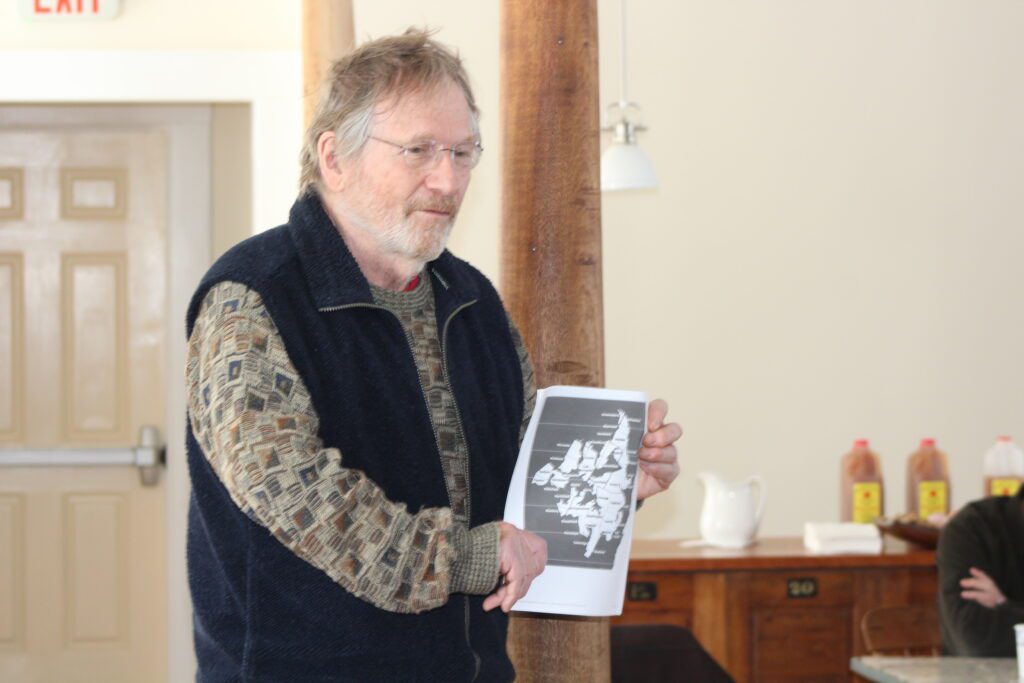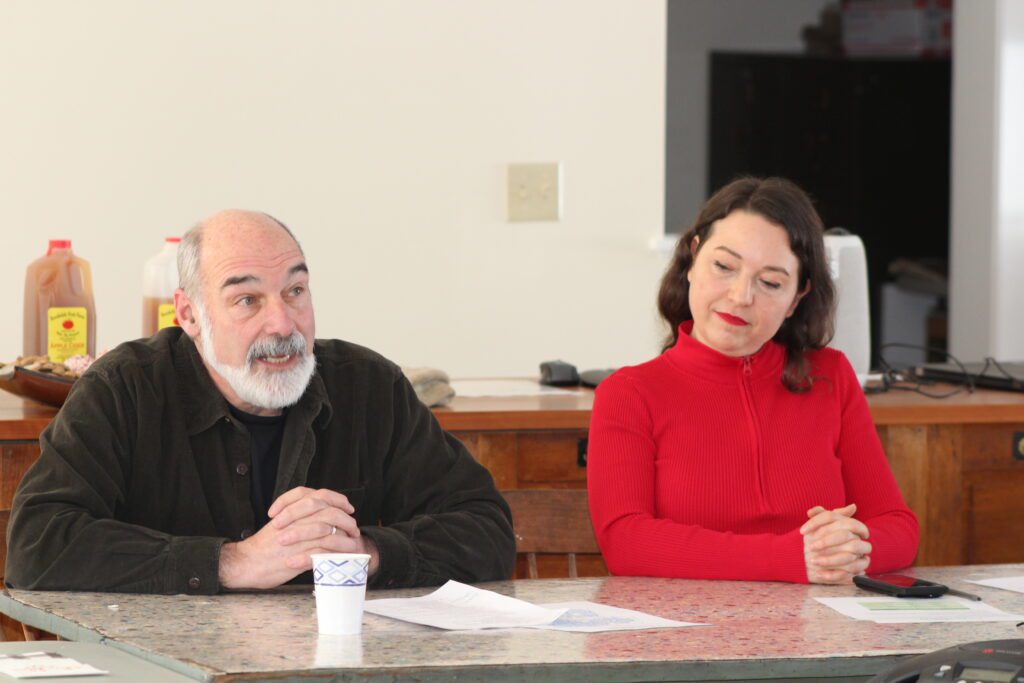CVFiber groundbreaking echoes rural electrification efforts of 1930s and 1940s
“What we’re doing will be transformational the same way rural electrification was transformational to central Vermont.”
Jerry Diamantides
On December 21, 2022 – the peak of holiday season, between two winter storms – several dozen central Vermonters and state officials arrived at the Calais Town Hall to mark the groundbreaking of the communications union district (CUD) CVFiber’s network construction. Whether or not the timing was auspicious depends on your perspective: even though attendees discussed preparations for the holiday storm then still in the forecast, the power was on. As Jennille Smith, executive director of CVFiber welcomed attendees, she said knowingly, “Here it is, snowy and December in Vermont. What better time to start?” The conveners were already well aware it takes grit, faith, and a lot of neighbors to launch a major collective infrastructure project – the timing, in some ways, was a metaphor.
The other factor well known to the central Vermonters within CVFiber’s service area is that, historically, this is how a lot of essential infrastructure has reached their region. Time and again, organizers reflected on the similarity between the work to bring high-speed, not-for-profit broadband to their communities and the work more than 80 years earlier to bring electricity. In his comments, Jerry Diamantides, governing board chair of CVFiber, said, “What we’re doing will be transformational the same way rural electrification was transformational to central Vermont.” The long-term importance of reliable high-speed internet can’t even be envisioned yet, but “the near-term future internet will be all about erasing geographic distances,” he said. “We are closing the rural digital divide today.”
Diamantides singled out Barry Bernstein, former WEC Board President, “for having the vision years ago for collaboration between WEC and however broadband was going to get to central Vermont.” Bernstein, a longtime resident of Calais, was instrumental in designing an original agreement that would leverage WEC’s access to low-interest federal loans to improve its infrastructure, which would have included hanging fiber to lease back to CVFiber. When federal American Rescue Plan Act (ARPA) funds were released with grants specific to rural broadband rollout, it no longer made financial sense for the membership to take out those low-interest loans. The two partner organizations were able to essentially reverse their roles: CVFiber is using federal grants to hang fiber on WEC’s poles, and WEC will lease the fiber to improve grid communications.
Rep. Avram Patt (Lamoille-Washington) was WEC’s general manager for many years, and is now serving his third term on the House Committee on Environment and Energy. To illustrate the desperate need for high-speed internet, he described one of many stories he heard from constituents during the pandemic: a family of four with two working parents and two schoolchildren, who had to sit in their car accessing an internet hot spot outside the Worcester Town Hall for hours each day in order to work and attend school, because their home internet was inadequate.

To show how broadband rollout now mirrors rural electrification, Rep. Patt displayed a map of WEC’s service area. Two narrow vertical strips cutting through WEC territory represent areas flanking Routes 12 and 14 that are served by Green Mountain Power. Internet followed cable, which followed electricity along the major roads, he explained; for the rest of the population of Central Vermont, the map represents a nearly complete overlap, he said, of WEC membership and people with no or inadequate internet. In other words, in order for rural central Vermont to get electricity and high-speed internet, it takes a cooperative effort, because there is little business proposition for providing service outside the denser travel corridors. Because “no company whose purpose is to make a profit would, in their right mind, serve these areas,” he declared, to laughter.
Other comments came from Christine Hallquist, executive director of the Vermont Community Broadband Board (which is chaired by another former WEC GM, Patty Richards). Hallquist, who previously served as Vermont Electric Co-op’s general manager, celebrated the mutual support among CUDs and the social benefits internet access promises rural Vermont.
As construction progresses, fiber will be strung on utility poles, most of which belong to WEC. The purpose is to offer universal broadband access to all within CVFiber’s member communities. Individual households will choose whether to join the CUD as members, Diamantides and David Healy, Calais representative to CVFiber, described. Internet speeds will be 100 Mbps (megabits per second) both upload and download, at a cost projected at $79 per month. The cost of connecting a household to the network is determined by income, with CVFiber paying the cost to connect income-eligible households. More information is available at cvfiber.net.


